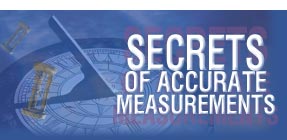 |
 |
 |
| RU |
|
Login
Newsletters
There is no newsletter category found. Information
|
Rohde & Schwarz first to provide 3GPP Cellular-V2X device testing through application layer06/19/2018 Rohde & Schwarz, a leading supplier of test & measurement equipment, has expanded the capabilities of its R&S CMW500 LTE network simulator and R&S SMBV100A GNSS simulator to support critical end-to-end safety related scenarios for device certification. Working with Qualcomm Technologies, Inc., a subsidiary of Qualcomm Incorporated, and with the Qualcomm® 9150 Cellular Vehicle-to-Everything (C-V2X) solution, customers can now validate C-V2X Direct Communications (PC5) Mode 4 (out-of-network coverage) capable devices as defined in 3GPP Release 14. The companies demonstrate this capability at OmniAir Consortium’s Motor City Plugfest in Detroit, Michigan. C-V2X direct communications capability is designed to allow vehicles to communicate directly with each other (V2V), with vulnerable road users including pedestrians (V2P), and with roadway infrastructures (V2I) without a mobile cellular subscription or network assistance while operating in bands 46D and 47 for the 5.8 GHz and 5.9 GHz ITS spectrum bands. Synchronization of the vehicles uses the existing GNSS satellite signals, which are required for the safety messages for location information. The R&S CMW-KU514 C-V2X software package on the R&S CMW500 is used to verify end-to-end data transmission and reception over the PC5 interface in ideal, faded and congested channel conditions. Future use cases cover a message transfer from one vehicle to another during emergency braking, or alerts from a car to a pedestrian focusing on his smartphone when crossing a street. Also traffic lights could be made to transmit a countdown information until a light turns red to be displayed in a car‘s dashboard. C-V2X device testing through the application layer is a significant step towards achieving the goal of having fully connected vehicles to improve public safety. Connected vehicles can use sensors (including radar, lidar, and camera) to track the events happening within its visible range and use the well-established LTE technology in complementary direct (PC5) and network-based (Uu) communication modes to track events happening outside of its visible range, and to obtain information such as intent as well as traffic signal phase and timing (SPaT). While PC5 enables direct communications for active safety scenarios that are latency-sensitive, like collision avoidance, network communications (Uu) extends the range by enabling vehicle-to-network (V2N) to deliver informational safety information to advise of conditions kilometers ahead, such as green light traffic optimization, variable speed limits / brake dampening, and upcoming traffic incidents. Together, direct communications and network communications deliver the promise of the fully connected car, and offer the most compelling and optimized platform for transportation safety and efficiency. Company profile: Rohde & Schwarz Related Information:
Companies' news
KIPiS articles
|
Current issue
Search
|
|
|
| © "Test & Measuring Instruments and Systems" ("KIPiS"), 2000-2024 |

























